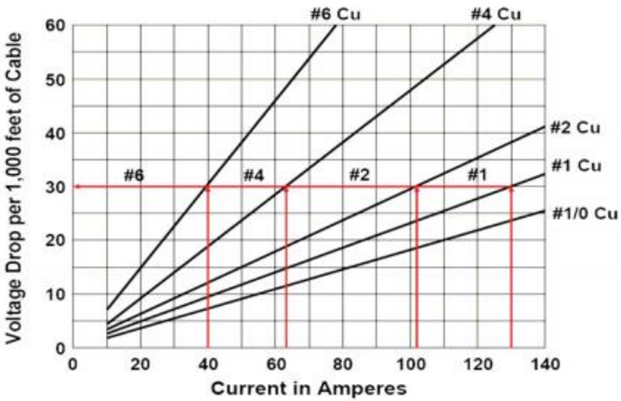Cable power losses or power drop are due to the conductor resistance heating that occurs when current flows. These cable losses are more often called KW losses or I²R losses. This is expressed by the following formula:
Power losses = 3 × (I²R) /1000
Where: Power losses in kW units, I is the current (in amps) and R (in ohms) is the average conductor resistance.
How to lower the resistance in the cable?
Power lost in a cable depends on the cable length, cable size and the current through the cable. Therefore, there are three ways to lower the resistance in the cable:
- Shorten the length of the cable,
- Increase the size of the conductor,
- Decrease the current through the cable.
Minimizing cable length:
Minimizing cable length reduces significantly the cost factor when purchasing the cable and has a long-term effect on KW losses in the ESP system.
Conductor size selection:
The higher the conductor size, the higher the initial capital cost of the cable. Therefore, there are many factors to be considered when purchasing the cable:
- What’s the current (amps) load expected today?
- What will be the current load in the future if the water cut increases to +90%?
- What will you pay for KW losses today and tomorrow to handle future well fluid rates?
Increasing the size of the conductor lowers the resistance in the cable and therefore reduces power losses. In the other hand, as mentioned above the higher the conductor size, the higher the initial capital cost of the cable. Nevertheless, power cost saving can generally pay for the increase cost of the cable in 2 years.
NB: a well with high bottom hole pressure may require a larger conductor size than a well with lower bottom hole pressure. Actually, the cable resistance increases with temperature.
Voltage drop:
Voltage drop is determined from the size and length of the conductor at the bottom hole temperature. In order to select the proper surface voltage, the cable voltage drop has to be added to the motor’s nameplate voltage.
The following graph shows an example of Cable Voltage drop plot to determine the voltage drop in cable. At the selected motor amperage and the given downhole temperature, the selection of a cable size that will give a voltage drop of less than 30 volts per 1000 feet is recommended. This curve will also enable you to determine the necessary surface voltage (motor voltage plus voltage drop in cable) required to operate the motor.

You May Also Like…






Please clarify why the fourmla for power losses include times 3
As I know p=I2*3 without multiputing by 3
Thanks for reply